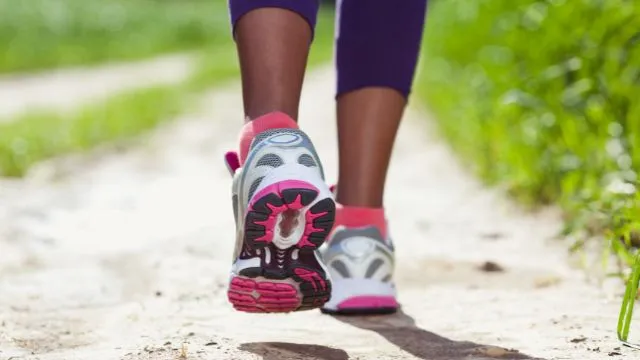Few activities benefit the body without requiring any equipment. Running is one of them. Whether you decide to run daily for a chiselled and healthier body or practise for a marathon, all you need is a track and willpower. However, there is one thing running requires- a good pair of running shoes. Running with the wrong kind of shoes on can cause injuries such as shin splints, bunions, corns, and other aches and pains. However, the correct type of shoes can not only protect you from several foot issues but also enhance your performance!
How to Choose the Right Running Shoes?
Proper footwear can not only protect your feet but also alleviate problems such as joint pains, foot alignment, bad posture, knee and ankle pains, etc. To get the maximum benefits out of your footwear and reduce the risk of injuries, you need to consider the following things before buying the right pair.
Foot Type
The very first thing you need to consider before selecting any shoe is your foot type. Do you have a neutral arch, a high arch or a low arch? The height of your arch determines how your foot pronates and where you need more cushioning or padding in your shoes. You can do a self-diagnosis of your shoes or take a gait analysis test to find out your foot type.
Select the Shoe Category
Depending on the type of foot, running shoes are available in different categories, such as neutral, stability, and motion control. People with high foot arches should opt for neutral shoes. Underpronators must choose stability shoes, while motion-control shoes work well for overpronators.
Choose the Right Fit
Choosing the right fit is crucial. Your shoes should not be too tight or loose. Do not make the mistake of buying shoes that feel tight, thinking that they will loosen up after one or two uses. The right running shoes should feel snugly around your feet but also give your toes to wiggle and should not rub or chafe your skin. Make sure you try on shoes when your feet are at their largest.
Look for Cushioning
Again, the amount of cushioning you might require depends on your foot type. However, all running shoes must have adequate padding to absorb any impact while you run and avert the risk of injuries. Beginners should always choose shoes with more cushioning to protect their feet from pain and other issues.
Seek Flexibility
Running shoes must be flexible in the forefoot as it allows natural stride. A stiff shoe can hamper your run and even cause pain and discomfort. Continued running in stiff and rigid shoes can lead to injuries.
Check the Weight
Heavy shoes can take up more energy and thus tire you faster than usual. Therefore, check the weight of the shoes before you buy them. Lightweight shoes can not only increase your speed but also save your energy and reduce fatigue.
Replacement Matters
All running shoes succumb to wear and tear over time. Therefore, you need to replace your shoes once you reach 300-500 miles or every six months.
Tips for Running in Hot Weather
While running in summer can help you burn more calories, it can also be challenging and uncomfortable because of the high heat and humidity. However, you can incorporate a few tips and tricks in your routine to make running during the summer months comfortable, easy and fun.
Stay Hydrated
Whether you go trekking, hiking or running, the first and foremost thing to keep in mind is to keep yourself hydrated. A runner should drink water before, after and during the run. You can carry a water bottle with you or plan your running route such that you can make stops and hydrate yourself or get a refill.
Choose Appropriate Time
During summers, you can choose to run early in the morning or late during the evening when the temperatures have generally dropped, and the weather is cooler. If you can not schedule your runs during these times, make sure you take regular breaks and hydrate yourself.
Opt for Summer Clothing
Choose loose-fitting and breathable fabrics for your run. If you can, go for clothing and footwear with moisture-wicking properties. It helps you keep relaxed and comfortable throughout your run.
Wear Sunscreen
Sunscreen is essential every time you step out of the shade of your house. However, during summer, sunscreen becomes essential. It shields your skin from harmful UV rays. Therefore, wear sunscreen with an SPF 30 and one that has sweat and water-resistant properties.
Change the Pace
During the summer season, it is always better if you change your pace according to the weather. Due to high heat, it is not wise to run too fast for too long. Therefore, slow down your pace and take regular breaks to hydrate yourself.
Take Lots of Minerals
The primary purpose of running is to sweat, which burns calories and expels any toxins through the skin. It helps boost the overall health of your body physically and internally. However, most people believe that when you run and swear, you lose only water content from your body. The truth is you give up electrolytes and minerals as well, which are both critical for properly functioning your muscles.
To retain these vital minerals and electrolytes, you need to make sure that on the days when you plan to run, you eat extra healthy food. Load up on protein shakes and carbohydrate-rich food before and after running. Such foods not only give you a boost of energy but also help you recover from fatigue after your long run in the heat.
Choose the Right Running Shoes
As explained earlier, the right shoes play a significant role in making the activity of running safe, comfortable and fun. Make sure your shoes have plenty of ventilation and cushioning.
Conclusion
Investing in a good pair of running shoes is an investment for good health. So make sure you buy the best running shoes online with innovative designs and cutting-edge technology that can take your performance to the next level. So do not let uncomfortable shoes or the summer heat slow you down. Follow the abovementioned tips and run confidently and comfortably in stylish running shoes.


